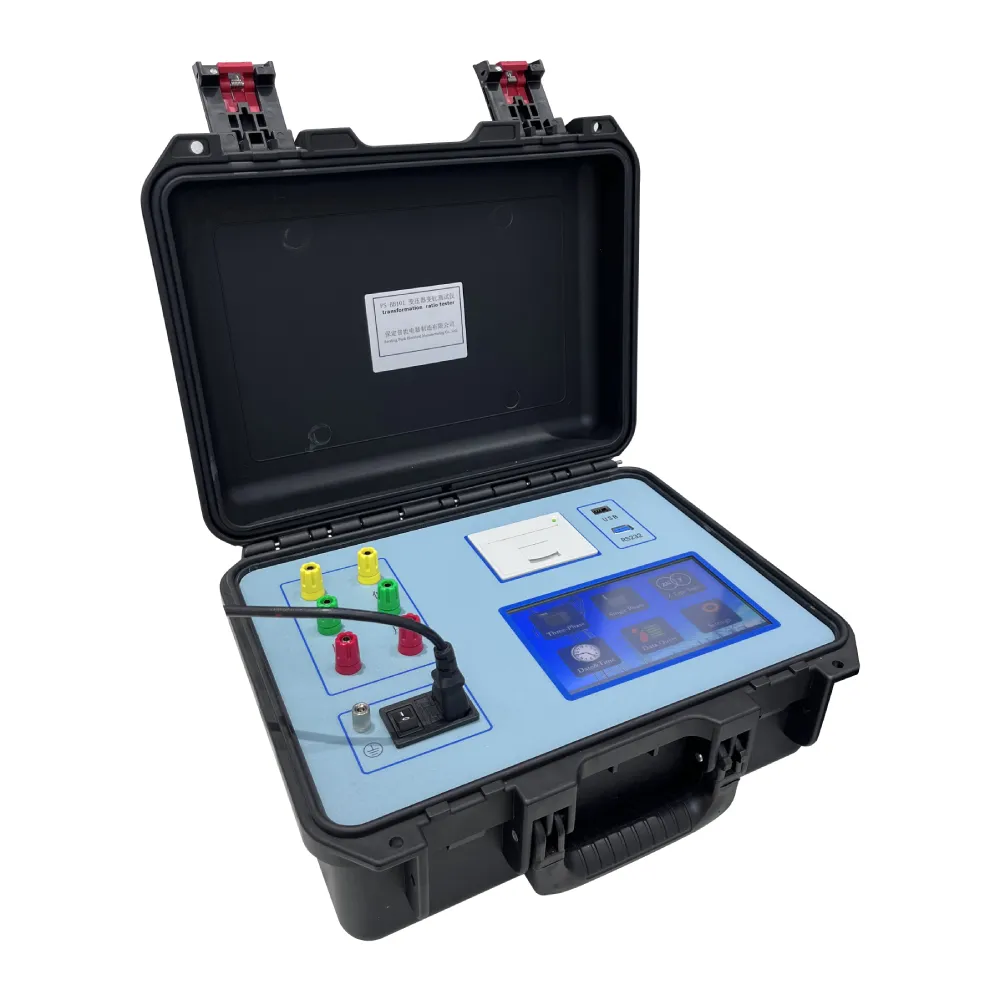 English
English


testing a transformer using multimeter
Testing a Transformer Using a Multimeter A Step-by-Step Guide
Transformers are vital components in electrical systems, used to transfer electrical energy between circuits while changing voltage levels. To ensure that a transformer is functioning correctly, using a multimeter is an effective and straightforward method. This article outlines the steps to test a transformer using a multimeter and highlights key points to consider during the process.
Understanding the Transformer
Before testing, it's crucial to understand the basic structure of a transformer. It generally consists of primary and secondary windings wound around a magnetic core. The primary winding receives input voltage, while the secondary winding supplies output voltage. Common issues with transformers include short circuits between windings, open circuits, and insulation failures.
Tools Required
To test a transformer, you will need a digital multimeter (DMM) capable of measuring resistance, voltage, and continuity. Ensure that the multimeter is set to the appropriate mode for the measurements you intend to take.
Step-by-Step Testing Process
1. Safety First Ensure that the transformer is disconnected from any power source before beginning the test. Safety is paramount when dealing with electrical components to prevent shock or equipment damage.
testing a transformer using multimeter

2. Visual Inspection Before using the multimeter, visually inspect the transformer for any obvious signs of damage, such as burnt components, frayed wires, or deformities in the casing.
3. Testing Resistance Set the multimeter to measure resistance (ohms). Measure the resistance across the primary winding's terminals. Compare this reading with the transformer’s specifications; if the resistance is too low (indicating a short) or too high (indicating an open circuit), the transformer may be faulty.
4. Testing the Secondary Winding Repeat the resistance test on the secondary winding. Again, refer to manufacturer specifications to determine if the readings are within acceptable limits.
5. Checking Continuity Switch the multimeter to continuity mode. Test for continuity between the windings. A good transformer will show continuity in both the primary and secondary windings.
6. Voltage Testing If the transformer passes the resistance and continuity tests, the next step is voltage testing. Reconnect the transformer to the power supply and measure the output voltage on the secondary winding. This voltage should match the expected output as per the specifications.
7. Final Assessment If the transformer passes all tests, it is likely in good working condition. If any reading falls outside acceptable ranges, the transformer may need repair or replacement.
Conclusion
Testing a transformer with a multimeter is an essential procedure for any electrical technician or enthusiast. By following the steps outlined above, one can efficiently diagnose potential issues and maintain the reliability of electrical systems. Always prioritize safety and consult the manufacturer’s documentation when interpreting test results.
-
Differences between open cup flash point tester and closed cup flash point testerNewsOct.31,2024
-
The Reliable Load Tap ChangerNewsOct.23,2024
-
The Essential Guide to Hipot TestersNewsOct.23,2024
-
The Digital Insulation TesterNewsOct.23,2024
-
The Best Earth Loop Impedance Tester for SaleNewsOct.23,2024
-
Tan Delta Tester--The Essential Tool for Electrical Insulation TestingNewsOct.23,2024





